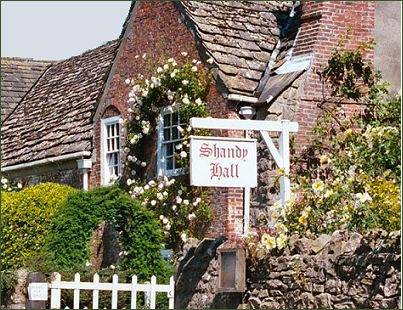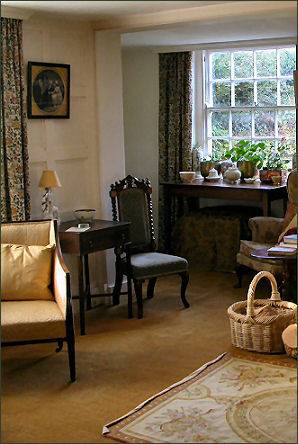Shandy Hall
OS grid reference:- SE 533 767

 Shandy Hall, situated near to St. Michael's Church in the charming North York Moors village of Coxwold, was once the home of the eighteenth century Anglo-Irish author and humorist, the Rev. Laurence Sterne.
Shandy Hall, situated near to St. Michael's Church in the charming North York Moors village of Coxwold, was once the home of the eighteenth century Anglo-Irish author and humorist, the Rev. Laurence Sterne.
Laurence Sterne was was born in Clonmel, County Tipperary, Southern Ireland in November, 1713, the son of Roger Sterne, an infantry officer whom was the grandson of Richard Sterne, Archbishop of York. His father, Roger Sterne, was an ensign in a British regiment recently returned from Dunkirk, which was disbanded on the day of Sterne's birth. Within six months the family had returned to Yorkshire, and in July 1715 they moved back to Ireland, having "decamped with Bag & Baggage for Dublin", in Sterne's words.
Sterne took holy orders and became a clergyman, he was appointed as the curate of St Michael's at Coxwold in 1760 and lived at Shandy Hall until his death in March 1768. He completed the later volumes of 'Tristram Shandy' and wrote his other major work 'A Sentimental Journey Through France and Italy'' whilst living there.
Having discovered his talent for writing, at the age of 46, he turned over his parishes to a curate, and dedicated himself to writing for the rest of his life. It was while living in the countryside, having failed in his attempts to supplement his income as a farmer and struggling with tuberculosis, that Sterne began work on his best known novel, The Life and Opinions of Tristram Shandy, Gentleman, the first volumes of which were published in 1759, a satire on intellectual pride, which brilliantly plays with the conventions of narrative, the book made him famous.
Shandy Hall dates back to 1450 and began life as a medieval long hall, built by George Dayville. It underwent significant alterations in the seventeenth century and further alterations were carried out by Sterne himself including the construction of a coach house, a cellar and a two-storey extension.
The house contains a collection of books, paintings, manuscripts, prints and ephemera relating to Sterne, there is also an imposing bust of Sterne by Joseph Nollekens which was modelled from the life in 1766 in Rome.
The study, where Sterne's works were written, contains portraits of Sterne, and the works of Montaigne, Shakespeare and Burton, which influenced his writing. Spectacular Tudor wall paintings were uncovered during a twentieth century restoration of the building.
Two acres of attractive, long established.gardens surround the house which is managed by volunteers and has an apple orchard, a pretty walled garden, and a wild garden in a disused nineteenth century quarry. There are views of nearby Byland Abbey from the gardens.
The garden is open to the public as a separate attraction. The outbuildings contain a shop and other facilities. Sterne is buried near the main door in the churyard of St Michael's Church in the village.
The Hall is now administered by the Laurence Sterne Trust, a registered charity and is open to the public on advertised days during the summer months and by appointment
Historic Buildings of Yorkshire
